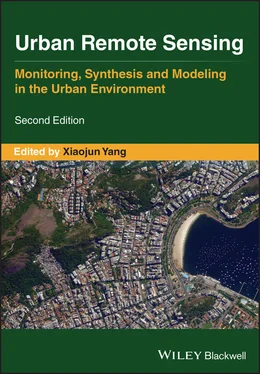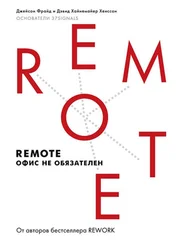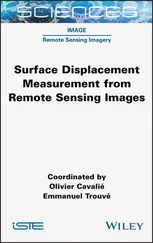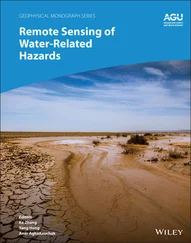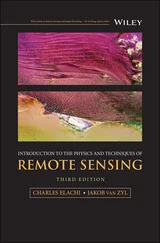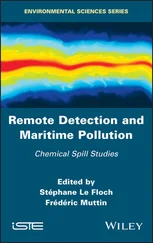Unfortunately, lidar data are not collected regularly in many countries worldwide or not accessible due to potential classified military operations; hence, the desire for spaceborne lidar and/or other data collection avenues for 3D data such as radar platforms. Spaceborne lidar platforms such as ICESat‐2 and GEDI offer open, free lidar data with increased repeatability though not to the level of spatial detail of the airborne options previously discussed and with extended repeat acquisition time (see Figure 2.1).
Remote sensing analyses increasingly require higher/finer spatial and temporal resolutions along with large swaths that realistically can only all be provided by spaceborne radar platforms, which attests to the significance of integration of radar data including Synthetic Aperture Radar (SAR) into analyses. To date and for the foreseeable future, radar platforms/sensors provide ample spatial and temporal resolution data for urban built‐up analysis compared to lidar alternatives (e.g. airborne lidar, GEDI, ICESat‐2). QuikSCAT SeaWinds scatterometer data have proven effective at estimating 3D build‐up within urban environments though at relatively coarse spatial and temporal resolutions (Nghiem et al. 2017; Mathews et al. 2019). Unfortunately, QuikSCAT is no longer operating while fully calibrated backscatter data at Level‐1B have not yet become completely and freely available from international satellite scatterometers (e.g. Oceansat‐2 in 2009–2014, HY‐2A in 2011–present, and SCATSAT‐1 in 2016–present). Subsequently, SAR platforms, of which several are now operating (or have operated over the past several decades) and with many future missions are planned such as NISAR and LOTUSat 1 and 2, provide the most promising 3D data option for future urban remote sensing analyses. SAR data options (e.g. COSMO‐SkyMed [CSK], TanDEM‐X [TDX], Sentinel‐1) too, as shown in Figure 2.1, provide both high spatial and temporal resolution data for highly detailed multi‐temporal assessments.
2.3 LIGHT DETECTION AND RANGING (LIDAR) APPROACHES
2.3.1 BACKGROUND
Airborne discrete‐return lidar is the de facto data standard for urban built‐up height estimation and volume calculation in research and in practice because it rapidly captures highly detailed 3D data for relatively large areas with minimal vertical error (Dong and Chen 2018). In fact, lidar data commonly are more accurate in the vertical dimension than the horizontal (Cheuk and Yuan 2009). Significantly, discrete‐return lidar data collection records multiple returns for each laser pulse sent toward the Earth's surface and laser pulses can penetrate vegetative canopy gaps (unlike passive, optical data). Lidar, therefore, captures terrain data beneath canopy as well as structural information about the canopy itself (Shan and Toth 2018). However, for urban applications emphasizing built‐up infrastructure, this is not as important as acquiring rooftop heights and structures – although in residential areas tree canopies often overhang rooftops of homes where multiple returns are important for vertically separating the two.
From a broader urban remote sensing perspective, lidar data provide a wealth of information on urban infrastructure applicable to many research topics such as small area population estimation (Dong et al. 2010; Zhao et al. 2017), urban feature extraction (Priestnall et al. 2000; e.g. roads: Boyko and Funkhouser 2011, building footprints: Rottensteiner and Briese 2002), visualization (Palmer and Shan 2002; Habib et al. 2008), and through a variety of change detection applications (e.g. pre‐/post‐disaster: Dong and Guo 2012, buildings/building types: Dong et al. 2018, etc.). In addition, given its importance in improving air quality and human health outcomes among other benefits, tree canopy delineation and quantification is also a common application for lidar data in the urban environment (Alonzo et al. 2014; Ellis and Mathews 2019). Regardless of application within urban research, lidar data handling is similar (see next section for data processing and analysis details).
Specific to this chapter on built‐up volume, research focusing on buildings is of special interest. For example, Dong et al. (2010) and Zhao et al. (2017) use lidar data to calculate building volume for portions of several Texas cities (Dong et al.: Denton; Zhao et al.: Austin, Dallas, Houston, and San Antonio) to estimate population with the assumption that higher building volumes signify increased population. Both studies extracted buildings from lidarderived raster data to explore how built‐up volume relates to several US Census population datasets. Results of regression analyses indicate that built‐up volume can serve as a proxy for population with moderate to high success. Although from remotely sensed data alone, complexities of land use are difficult to resolve – i.e. large industrial buildings might indicate many people work at these locations but does not mean they reside there (Zhao et al. 2017). Other urban remote sensing studies implement rasterized lidar data to demarcate building footprints by way of height thresholding and masking (Rottensteiner and Briese 2002) or through image classification techniques (Priestnall et al. 2000). Evaluation of built‐up change requires differencing of multi‐temporal 3D datasets along with additional efforts to extract and characterize types of change (Vu et al. 2004; Stal et al. 2013; Teo and Shih 2013; Dong et al. 2018).
2.3.2 DATA PROCESSING AND ANALYSIS
Raw lidar data are stored as point clouds, simple vector points with XYZ locations (with intensity, return number, etc. attributes), typically in LAS format (ASPRS 2013; LAZ files are compressed versions of LAS files) although other formats exist (e.g. XYZ, PLY, OBJ, PCD). Though a relatively simple file type, lidar point clouds are large datasets because they can contain millions of 3D points. Even for small area collections, lidar data are broken up into tiles, much like orthoimagery, to reduce the computational burden of handling the data. Not surprisingly, visualizing and processing these datasets can be difficult. Geographical Information System (GIS) and remote sensing software packages, though, continue to improve at integrating these datasets with other geospatial information. Due to these issues, conversion from point cloud to raster format persists to simplify the data into a more useable format (also, most analysis tools process raster data instead of raw point clouds).
Point clouds, without any processing, provide powerful visualizations that enable geospatial professionals and nonexperts alike to view and better understand the 3D layout of build‐up in an urban space. For example, Figure 2.2shows both the raw point cloud data for downtown Austin, Texas in 2015 as well as a simplified version consisting of extruded buildings derived from 2006 lidar data. These visualizations and underlying datasets enable analyses related to urban planning such as solar radiation/interaction (Yu et al. 2009), potential for solar panel placement on building rooftops (Lukac et al. 2014), and more. Other researchers use the point cloud data directly to algorithmically detect and characterize specific built‐up shapes (Dorninger and Pfeifer 2008; Golovinskiy et al. 2009; Babahajiani et al. 2015). This type of analysis remains difficult in terms of algorithm development and computational needs. Further, for change detection, point cloud comparison analyses are becoming more commonly supported by open‐source software such as CloudCompare. Even in these cases though, point cloud data is often transformed to 3D mesh models (like triangular irregular networks or TINs in GIS) to analyze the data. Related to this and other approaches, Figure 2.3summarizes the common lidar data workflows, data products, and eventual analyses conducted within urban remote sensing. Notice that when analyzing the point cloud directly, point cloud filtering is often still required.
Читать дальше
